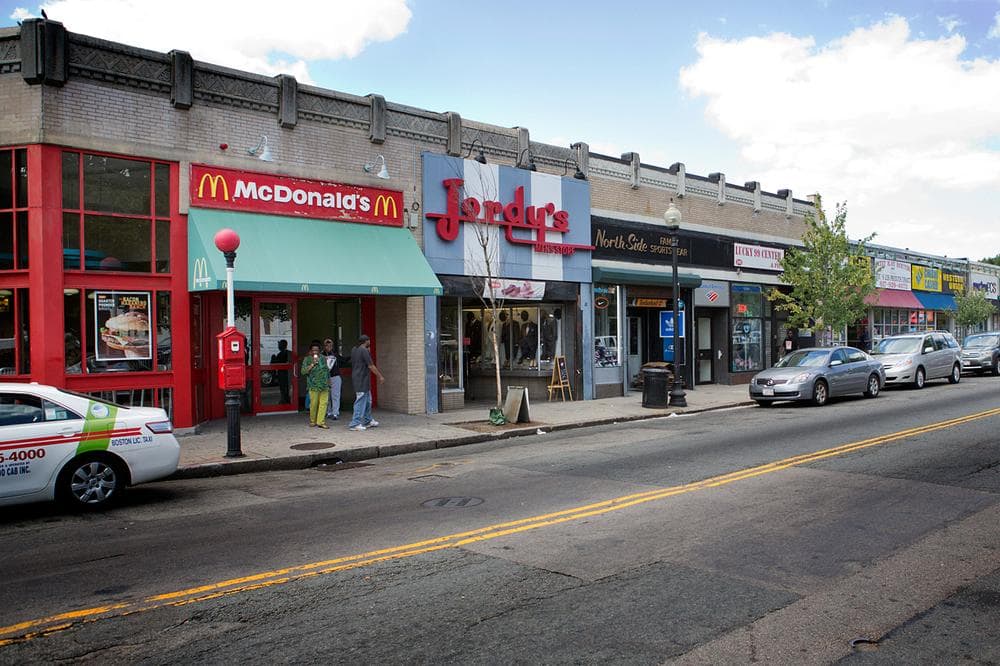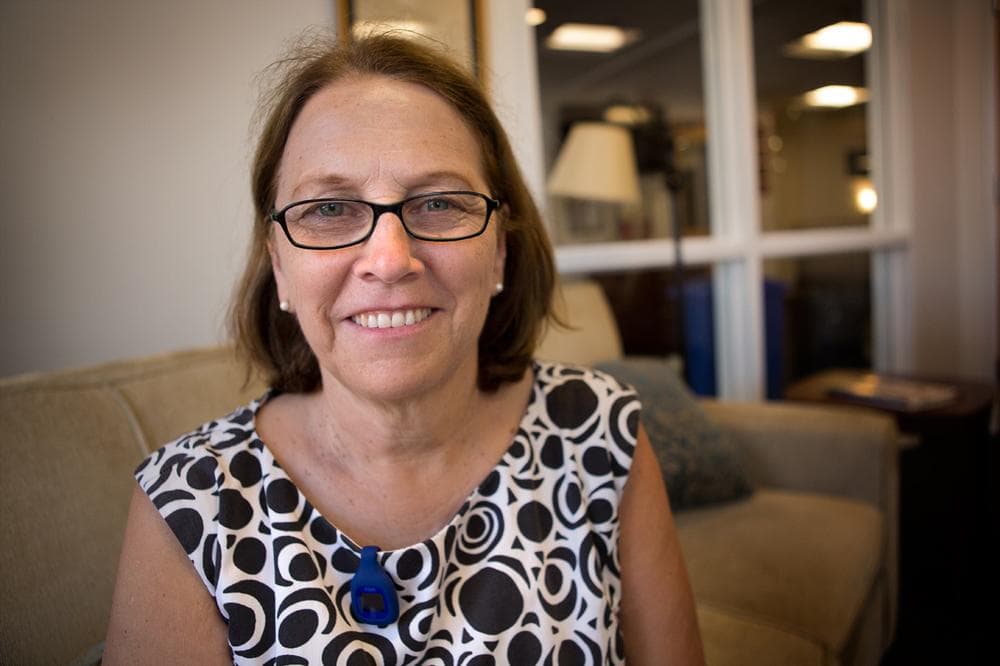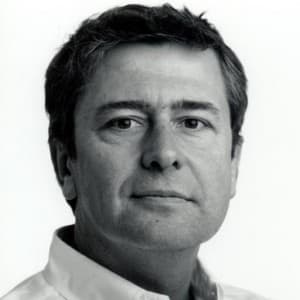Advertisement
Health Center Drives Codman Square's Transformation
Codman Square, in the heart of Dorchester, has plenty of optimists. Bob MacEachern is one of them, and he has reason to be. He remembers how bad things used to be in the neighborhood.
"One of the early memories I have was the smell of smoke," MacEachern said, explaining that some landlords burned houses they could not sell.
It was a low point for Codman Square, the center of which lies at the intersection of Norfolk Street, Talbot Avenue and Washington Street.
"West of Washington Street was basically where the city had given up and not done anything for a long period of time," MacEachern said, adding that he was lucky; he grew up on the east side of Washington Street in the late 1970s.

Boston then was in a population decline that began in the 1950s and would not turn around until the '80s. Today, the city is still growing. If it was not part of Boston, Dorchester, with a population of 92,000, would be the seventh-most populated city in Massachusetts.
MacEachern was one of the few white kids left at the Fifield Elementary School. He remembers when racial violence erupted outside over busing.
"I was trapped in this building, I want to say in 1979 or 1980," he recalled. "It was kids who came from South Boston to fight kids from Dorchester."
MacEachern also faced street crime. In 1987, at the age of 12, he decided to spite drug dealers on his street when he found some money at a drop-off point.
"I called the police and I turned it in. It was found money. One year later, I got the money legally and clear for myself," MacEachern said. "It was $500 or $600. It made me scared for some of these guys who were going to take me out, but also it taught me you can change things by taking action."
Advertisement
Still in middle school, MacEachern took over the neighborhood crime watch group. Later, he revived the Ashmont Hill residents' association. He came to realize that in order to change things on his street, he had to take action in Codman Square, just two blocks away. The Bank of America branch that's there now used to be a derelict building with a tree growing out of it, the McDonald's sits where crack was once sold.
"So if the major part of your community — the central business district — has a crack business, it has a fundamental impact on what you're doing," he said.
But the neighborhood also had strengths. Dorchester's residents were becoming less parochial and more diverse — identifying less with the parish they belonged to and more with the neighborhood they lived in: Savin Hill, Adams Village, Codman Square.
In 1990, three years before Thomas Menino was elected mayor, south Dorchester was half white. Today, it's one quarter white, 41 percent African-American, 13 percent Latino and 11 percent Asian.
A Transformation
In 1986, Candice Gartley was drawn to Codman Square — named after the first minister of the church at its center — by the inexpensive houses, but she stayed for the diversity.
"We moved into a beautiful house. We were going to renovate it, sell it, make a killing, move to the suburbs," Gartley said. "And we ended up falling in love with our neighbors and the neighborhood and just raising our kids in a really diverse place."
“We moved into a beautiful house. We were going to renovate it, sell it, make a killing, move to the suburbs. We ended up falling in love with the neighborhood.”
Candice Gartley, resident
Gartley, now co-chair of the Codman Square Neighborhood Council, says she has witnessed a transformation.
"There was a lot of crime. We got broken into at least once a month for the first year or so we were here," she recalled. "You could park anywhere, we always had a place to park. Now it's very difficult, which is probably a good sign, I think. I love this place. It's a very close community."
"When I first began working here in 1992, all of the buildings were vacant," said Jo-Ann Winbush, director of operations for the Codman Square Health Center. She remembers taking precautions to go to the bank across the street.
"We felt like everyone in the community knew our pay day and so we would only go in groups to cash our check," she said. "There was groups of kids on every corner. The prostitution up Talbot [Avenue] was atrocious."
The city began placing police officers on foot patrol, a tactic Winbush says worked on some blocks, but not on most.
The neighborhood has changed so much that Winbush says she can't afford to buy a home in Codman Square now, so she commutes from Brockton.
A turning point for Codman came in 1979 with the opening of a health center in the old public library by a group of optimists led by Bill Walczak, now one of 12 candidates running for mayor.

"In this neighborhood, the health center has been the driving economic employer, 300 new jobs were created," said Meg Campbell, who co-founded the charter school that now occupies part of the health center. "This is the economic engine of this neighborhood."
In 2001, when Campbell wanted to open a charter school in Codman Square, she went to Walczak.
"It made sense to me to go to Bill and say, 'What about putting it in the health center?', because his vision of the health center was very activist-oriented," Campbell said. "It was never just a health center. It was a strategy for revitalizing the neighborhood."
Walczak had space, but had a different tenant in mind.
"He offered free rent for 2,500 square feet for two years to any restaurant in Dorchester and no one would talk to him," Campbell recalled. "They said Dorchester — Codman Square — was too dangerous."
So Walczak agreed to let Campbell open the Codman Academy in the health center. The students who attend the school reflect the diversity of the neighborhood — a fourth of them speak a language other than English at home: Cantonese, Cape Verdean Creole, Haitian Creole, Spanish.
Roberto Gay, a graduate of Codman Academy now in college, says the charter school gave him a safe place to be.
"The school I know helped a lot," Gay said. "It kept us in class way past the regular hours that a public school would, so that helped with keeping kids out of trouble."
Jobs, Schools, Safety ... And Bike Lanes
Campbell, a member of the Boston School Committee, supports Walczak in his run for mayor. She says she wants to see in the next mayor a proven ability to transform the city.
"A track record of management and innovation. [The health center is] a very large organization, a very large budget. The School Department alone is over a $1 billion budget. We have 127 schools, 57,000 kids, over half those schools are low-performing," Campbell said. "I want someone who has a fire in the belly about the achievement gap, that we're just not going to tolerate it."
Sam Eong, another graduate of Codman Academy, says he would like the next mayor to deliver parks where he would have no fear of taking his nephew.
"There was more patrolling happening, someone stationed there, then it's far less likely that there'd be conflict and there'd be more safety," Eong said.
Romaine Palmer, who comes to the Codman Square farmer's market every Thursday with a group of teenagers who sell products they've made as a part of a program to learn about the restaurant business, wants the next mayor to work to create more jobs for teens and offer more afterschool programs to keep kids off the streets.
Across the street from the rebuilt Ashmont MBTA station, Gay spent the summer working at a bike shop with fellow Codman Academy graduate and college student Tyrell Brewster.
"This shop wasn't here two years ago," Tyrell said. "[It has had a] big impact on Dorchester because now people can bring their bikes here instead of going to Cambridge to get their bikes fixed."
The bike shop is just two blocks from last month's midday shootout involving police, a reminder that violent crime still visits the neighborhood. Even so, Gay, who commutes to the bike shop from Mattapan, has a modest request of the next mayor: bike lanes.
"I would like to ride my bike here sometime," Gay said. "My parents are kind of scared for me whenever I ride back and forth from work."
Gay's simple request in a neighborhood where houses used to burn signifies how far Codman Square has risen.
Over the next two months, WBUR will explore the race to replace Mayor Thomas Menino through the eyes of the residents who live and work in Boston and explore how some neighborhoods have changed in the 20 years since Menino was first elected. Check here for our complete coverage.
This program aired on September 4, 2013.
